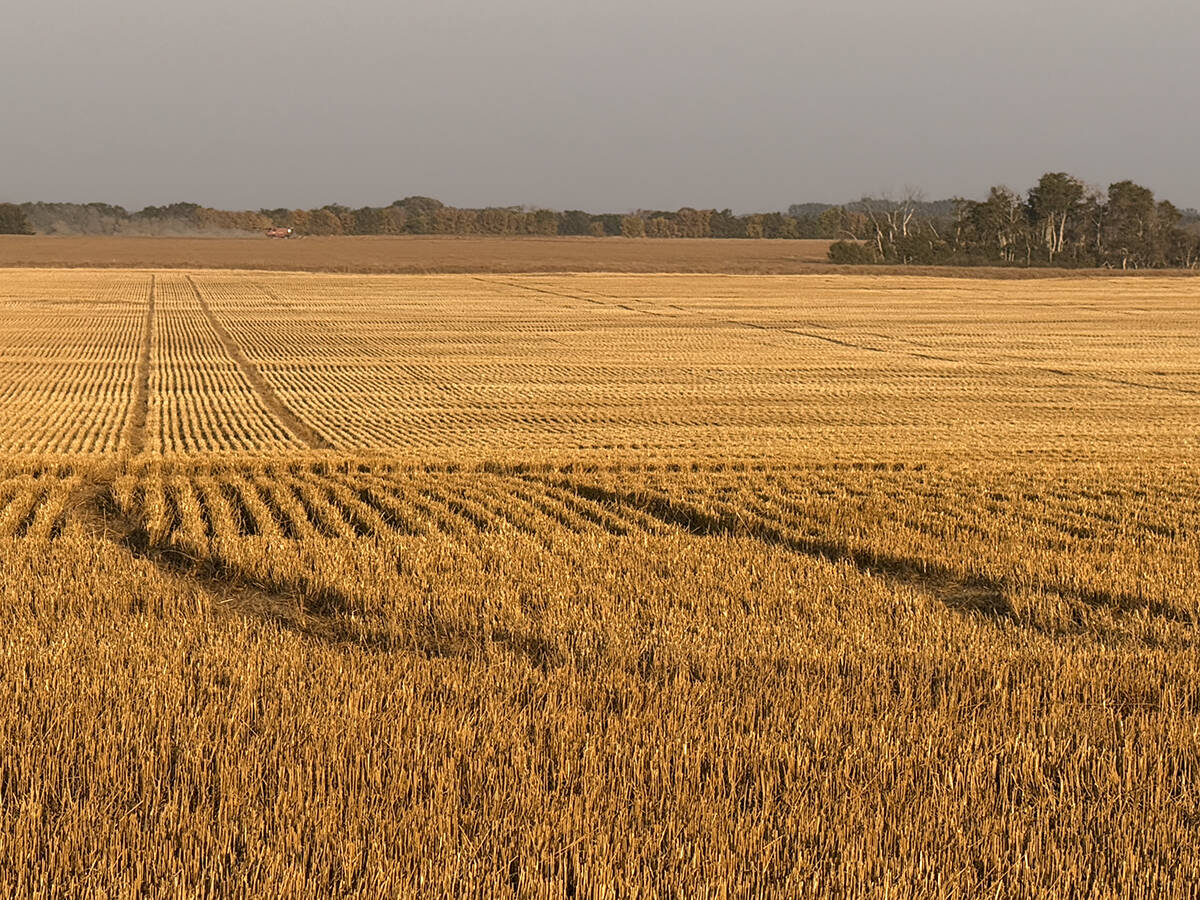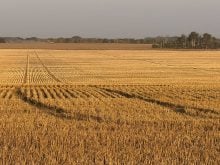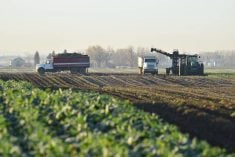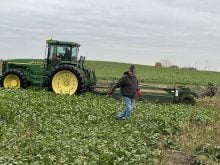At long last – rain!
And not a day too soon for tens of thousands of prairie farmers whose crops and pastures were close to failing because of drought.
“If it hadn’t come last week we would have been probably turning our cows out (onto the crops),” said Handel, Sask., farmer Bill Roesch. “It means our whole livelihood.”
A good eight centimetre (three inches) soaker fell across most of the Prairies last week. It was enough to bring most of the drought-stricken areas close to the average amount of rain received since April 1. Most farmers received half their rainfall this season last week.
Read Also

Final crop reports show strong yields, quality
Crops yielded above average across the Prairies this year, and quality is generally average to above-average.
Some areas, such as around Broadview, Sask., got too much of a good thing, with up to 25 cm (10 inches) of rain that caused flooding and soil damage. Melita, Man., received 17 cm (seven inches).
Other areas received only about one cm (1Ú2 inch), alleviating, but not ending the drought stress.
But in general the rains were slow, steady and desperately needed.
“It was a nice, soaking rain,” said Canadian Wheat Board weather watcher Don Bonner.
Drought conditions have dominated much of western Manitoba, Saskatchewan and eastern Alberta for the past month. Drought stress was damaging canola crops and wheat crops were heading out low to the ground. Hay crops were also low and pastures were unable to support much grazing.
Roesch’s farm was typical of many in Saskatchewan, with crops stunted and pastures parched and fragile. Hay crops had hardly grown above the ground and Roesch didn’t know how he was supposed to feed the 20 cows he had at home or the 50 he had on the community pasture if they were sent back.
This rain (he got five cm) means his pastures can recover, there’s less chance of his cattle getting kicked off the community pasture, he can seed oats for green feed and he has a chance at growing an average crop.
“I didn’t want to combine a five-bushel-an-acre crop,” he said.
Some areas left out
West of Roesch the situation gets worse however. From east of the
Alberta-Saskatchewan border and across most of east-central and northern Alberta, drought persists and crops are declining.
These areas received little or none of the rain that drenched most of the Prairies.
“They’re in dire straits,” said Bonner. Crops from Lloydminster to Vegreville to Oyen have already suffered irreparable harm and continued drought will further downgrade the potential of the crop.
Coronation, Alta., received only three millimetres of rain last week, only 40 percent of its average rainfall since April 1. Meadow Lake, Sask., has only half of the normal seasonal rainfall so far.
Coronation wheat pool elevator manager Dave Miller said farmers there haven’t seen a good rainfall in about a year: “It’s getting pretty grim right now.”
Other pockets of drought persist. In the northern Peace River country, less than half the average spring rainfall has occurred, and Assiniboia, Sask., has received only 22 percent of its average spring
precipitation.
For those who did get a good rainfall, prospects suddenly seem brighter, if not for them, at least for their neighbors.
Roesch seeded early, getting his canola in by the end of April. The next six weeks of dryness kept the crop small as it sunk roots deep down to capture whatever moisture was there.
That growth stagnation means his crop’s potential is already limited. But farmers who seeded late still have a chance for a good harvest, and he wishes them well.
“They could still get a bumper crop.”















